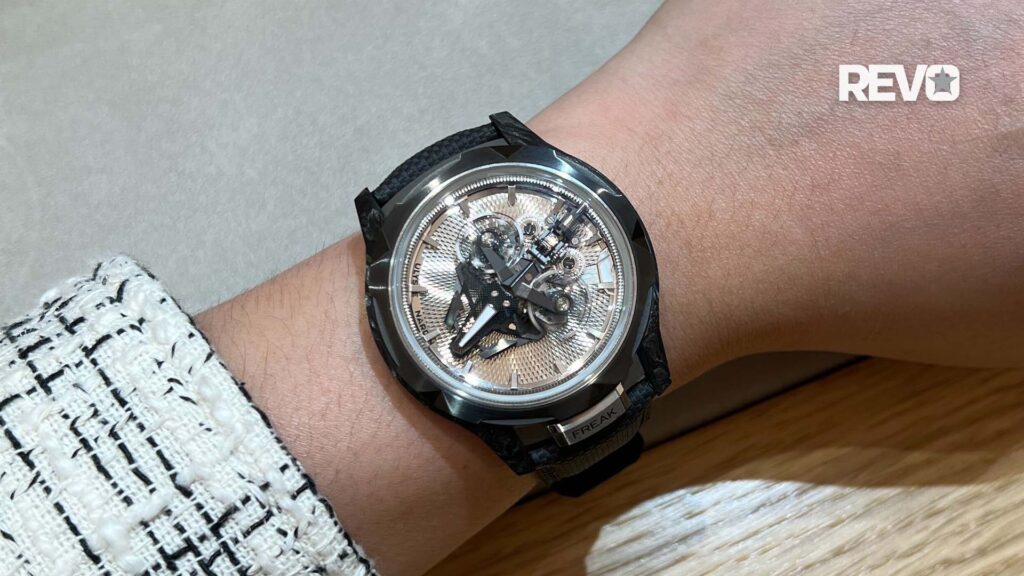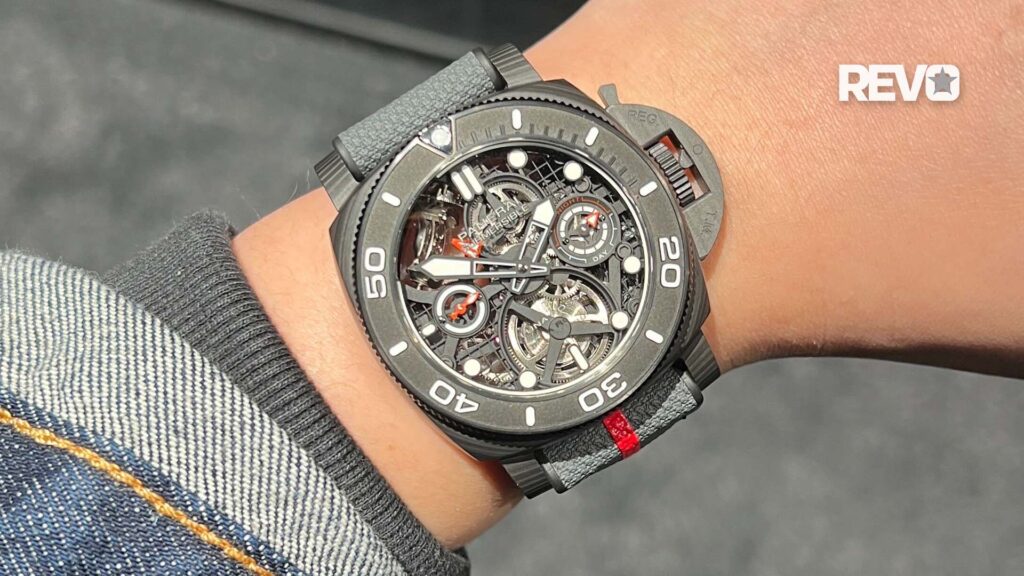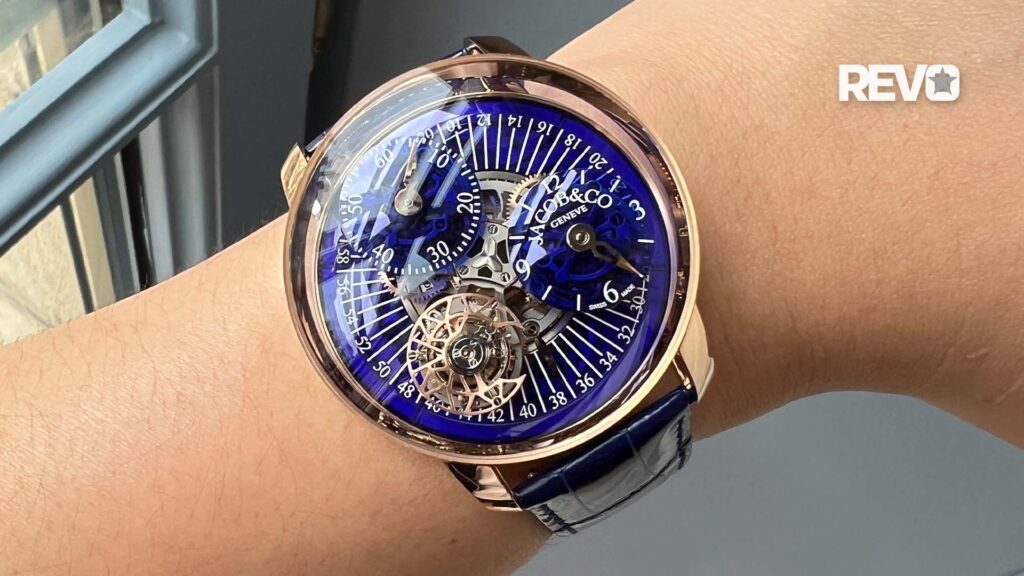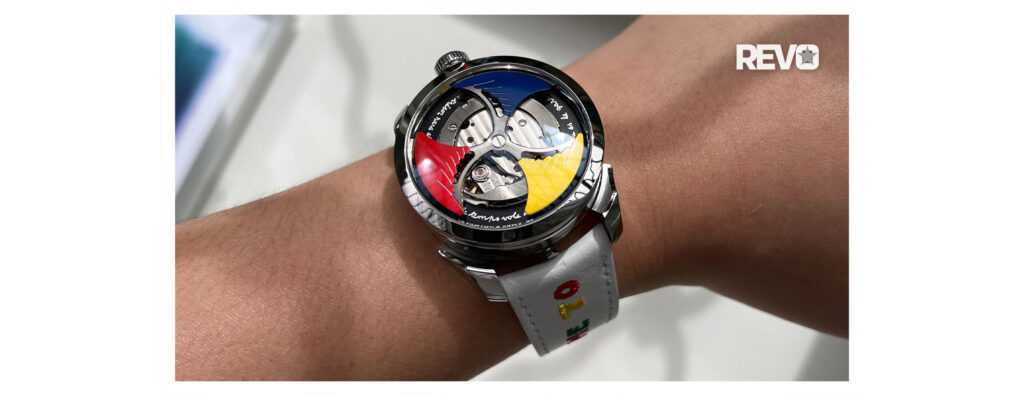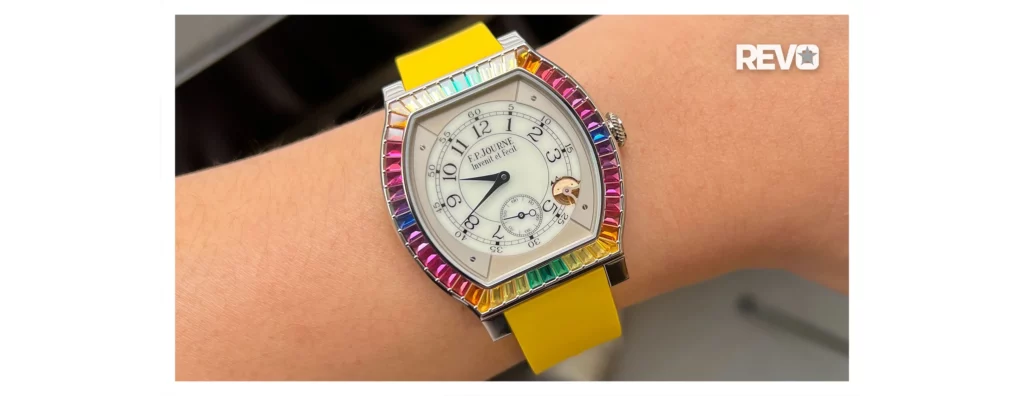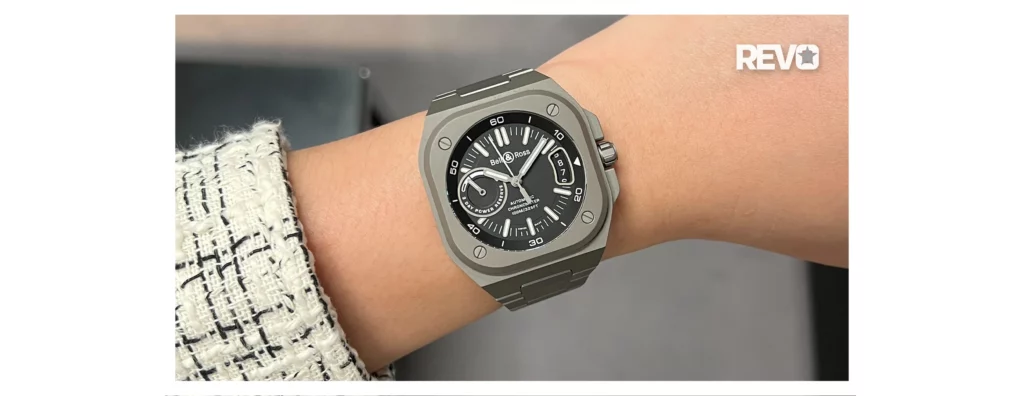Audemars Piguet
Watch Design: The Spirit of Integration
Firstly, some definitions… Watches that cannot be removed from their bracelets have been around for decades, but they are not the subject for this discussion. Hammered gold Milanese bracelets soldered onto a watch case have always been a dressy alternative to a strap watch for both men and ladies, but the design of the bracelet does not integrate into the case; likewise, some integrated bracelets can be removed with varying ease. It is the design of the watch that is integrated as much as the bracelet attachment method.
While it is tempting to be male-centric, ladies’ watches have had integrated bracelets since well before the 1970s. Indeed, the watch presented to Elizabeth I in 1571 was described as a richly jewelled bracelet ‘in the closing thereof a clocke, and in the forepart of the same a faire lozengie djamond without a foyle, hanging thearat a rounde juell fully garnished with dyamondes and a perle pendaunt.’, and while no images of the design have survived, it seems that this was as much a bracelet as a watch. Since then, watches have been incorporated into bracelet design in more or less overt fashion. From dials surrounded by elaborate swirls of diamonds that continue around the wrist, to dials cunningly hidden within a bracelet, the ladies’ bracelet watch has been as much a jewel as a timepiece, whether made by Patek Philippe, Rolex or Cartier.
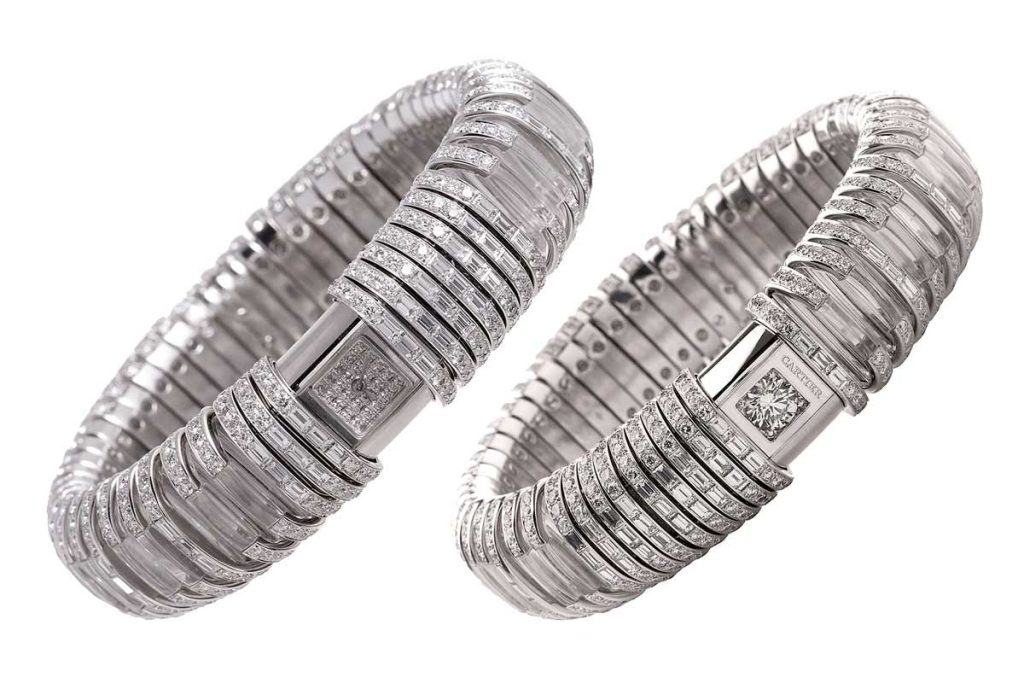
Cartier “Declaration” rock crystal and diamond bracelet watch (Image: Fourtane)
The Function of Integration
In parallel, a thriving market developed in the manufacture and sale of watch bracelets from the likes of Gay Frères, Zuccolo Rochet or, later, Stellux and Speidel, allowing wearers to adopt whatever style they wanted for their watch when their strap or bracelet wore out. Anyone who has handled early watch bracelets from the ’40s and ’50s can vouch for the fact that all but the most expensive feel flimsy and, if worn hard, must have needed replacement on a regular basis. As the decades passed, more bracelets appeared fitted to watches in catalogue images. For Rolex this is due to the success and expansion of the Oyster collection as their core line, a water-resistant watch that needed a metal bracelet to fulfil its main function. In the 1950s, curved end links began to appear, giving watch bracelets a more ‘integrated’ look. The primary reason for this was to reduce lateral pressure on the spring-bar by holding it in place, but it closed a gap between case and bracelet that was a point of weakness for a sports watch and considered by some to be unsightly. While the bracelet may have appeared more connected to the watch case, they were still two separate elements offering the flexibility of removing the bracelet for a different option.
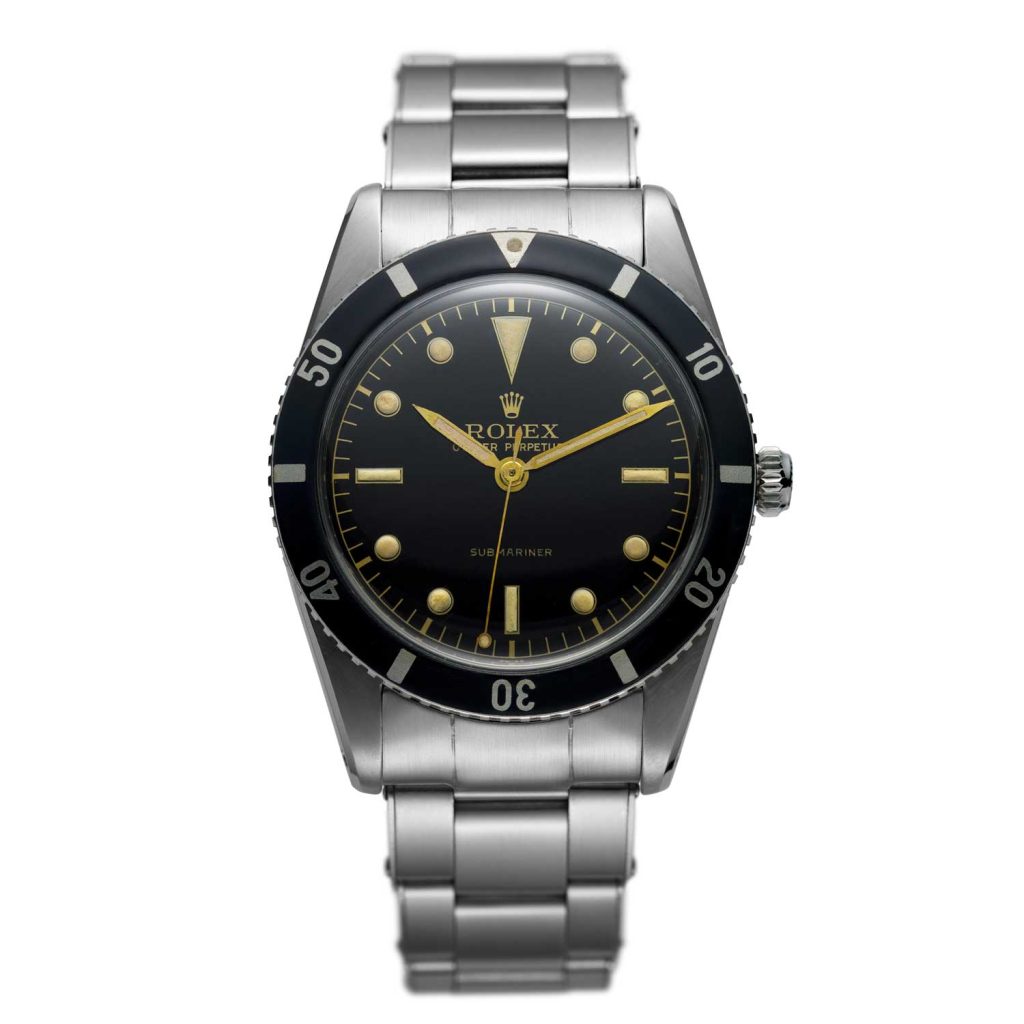
The Rolex Submariner from 1953 comes with curved end lugs that give the watch a look akin to that of an integrated timepiece
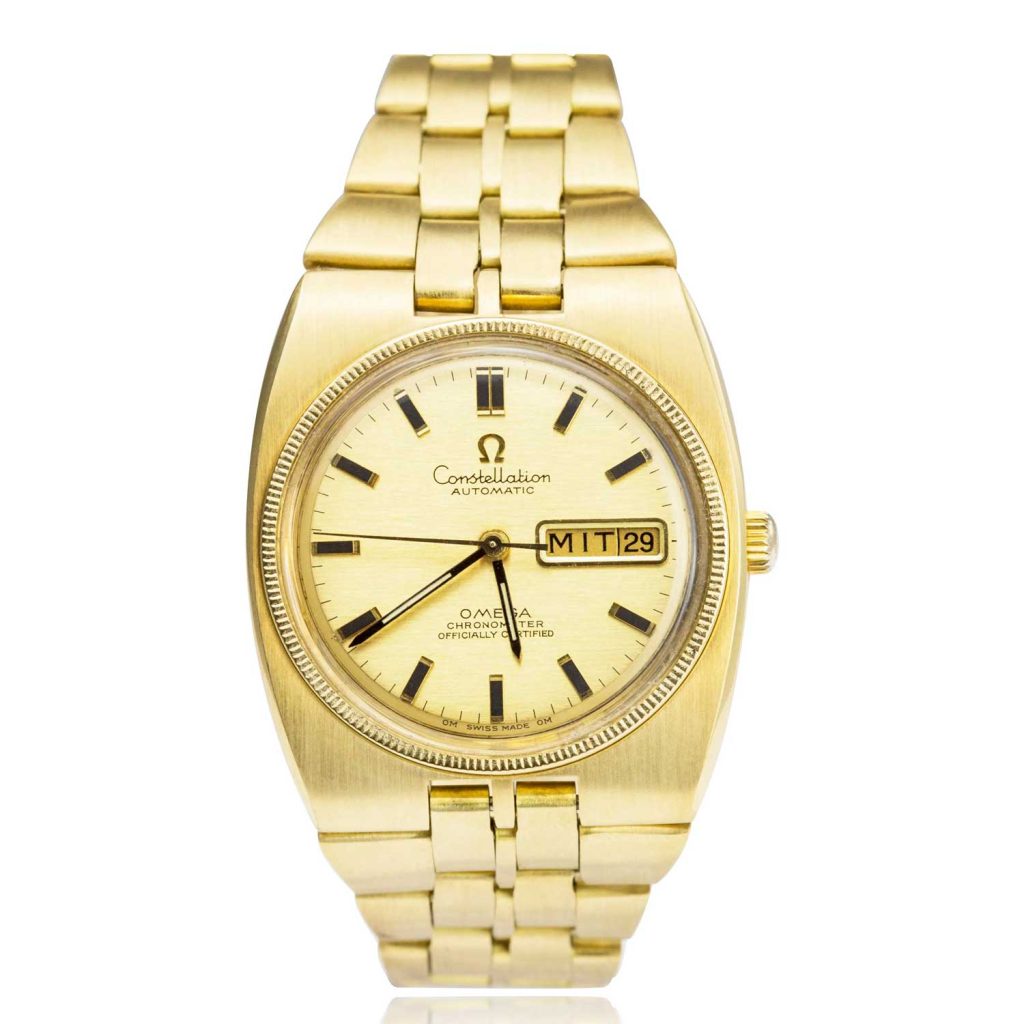
Omega Constellation reference 168.045, released in 1969
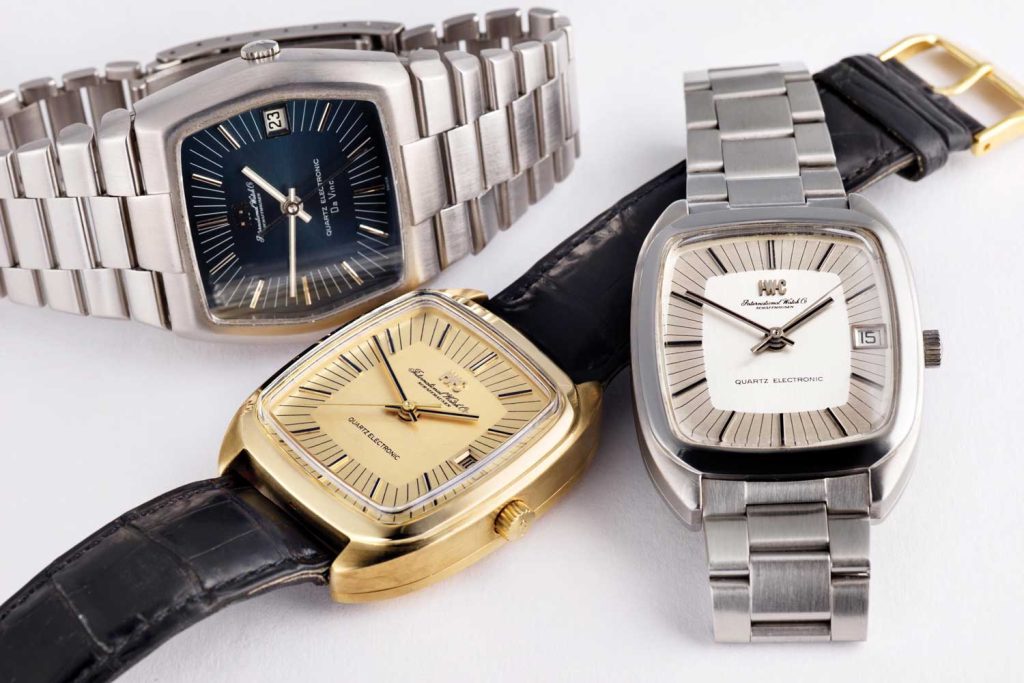
Da Vinci Beta 21 watch by IWC in several executions
Jewellery and Menswear
So, what was the context from which such designs sprang? The 1960s had seen a flourishing of men’s jewellery, with trends firmly rooted in the bohemian styles of the anti-establishment youth. Necklaces and bracelets were beads, braids and thongs. The early 1970s saw the establishment appropriate this style with bracelets and necklaces reworked in precious metals. Wristwear was big, bold, sleek and geometric. In July 1972 James Caan and Burt Reynolds posed for Playboy, sporting flamboyant examples of the latest jewellery trends, including chunky bracelets and bangles. Even the venerable jewellery house Cartier produced its first unisex bracelet. Designed by Aldo Cipullo, the Love Bangle, a heavy gold band with screw-head motif, was advertised being worn by men and women alike. In this environment it became far more acceptable for a man to wear a watch that was also a bold bracelet, or a bracelet that told the time.
The late 1960s and early ’70s was a time where designers came out of the shadows to be celebrated by the brands that they worked for. Back over at Omega, 1969 saw the beginning of a collaboration with Anglo-Italian jewellery designer Andre Grima: these ‘wearable works of art’ were all built around an Omega watch movement, but the 55 timepieces that make up the final collection were as far from conventional as they could possibly be. Each one was created as an inseparable unit with rarely a distinction between case and bracelet. It may be no coincidence, then, that Omega was an early adopter in the creation of integrated men’s watch bracelets.
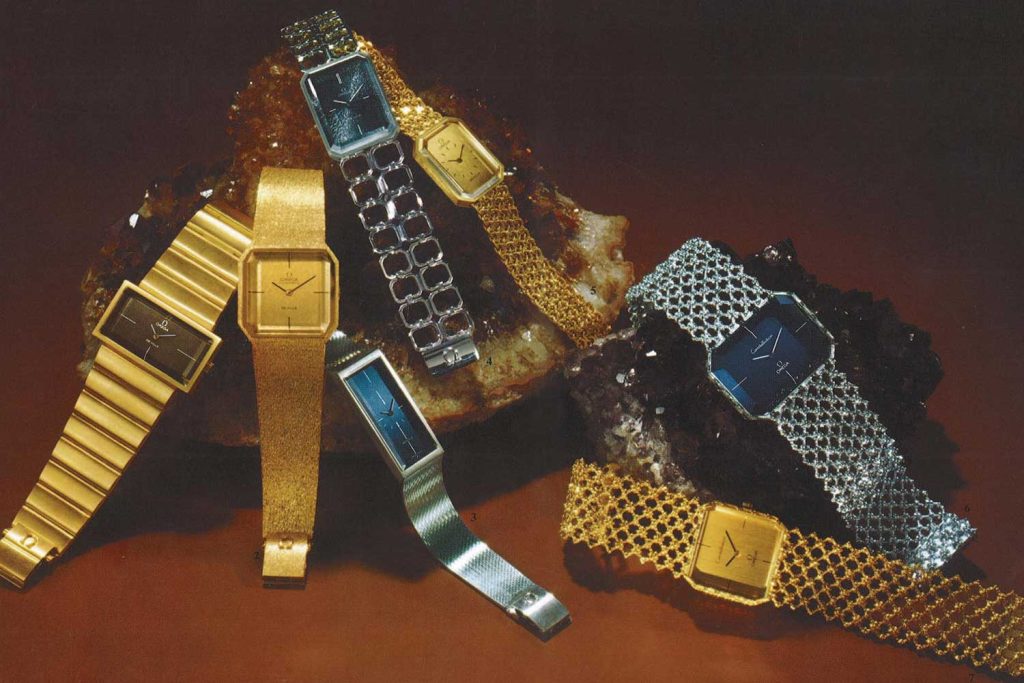
A series of watches designed by Andre Grima for Omega, with Omega movements inside. The watch cases merged bracelet design with case construction in a seamless whole
Against this backdrop, the appearance of a watch such as the Audemars Piguet Royal Oak, does not seem so groundbreaking. There had already been integrated steel mechanical bracelet watches (the Omega Constellation); there had already been expensive integrated bracelet watches (the Rolex 5100). What there had not been was a steel mechanical integrated bracelet watch with a slim automatic haute-horlogerie movement from a named designer that cost a small fortune. It was this combination of great design — the case flowing into the bracelet, right on-trend for 1972 — executed in mundane steel and at an eye-watering price, that shocked the world. You can almost hear the exclamations of ‘How much?!’ echoing down the decades. The steel construction coupled with the price made it exclusive. You could justify an expensive watch if it came as a solid lump of bullion, but for steel, and in such a slim case, only the truly wealthy could rationalise such a purchase. This was a sentiment delivered through their advertising slogan: “It takes more than money to wear the Royal Oak”.
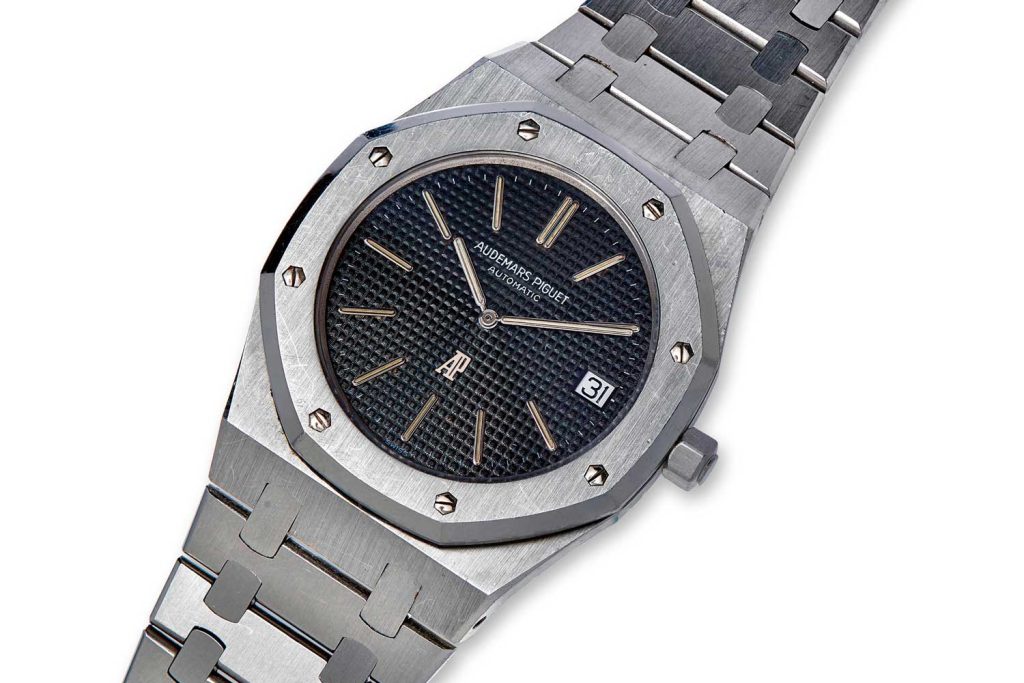
The 1972 release of the Royal Oak made design the driving force of a timepiece, and also shocked the world with its sticker price
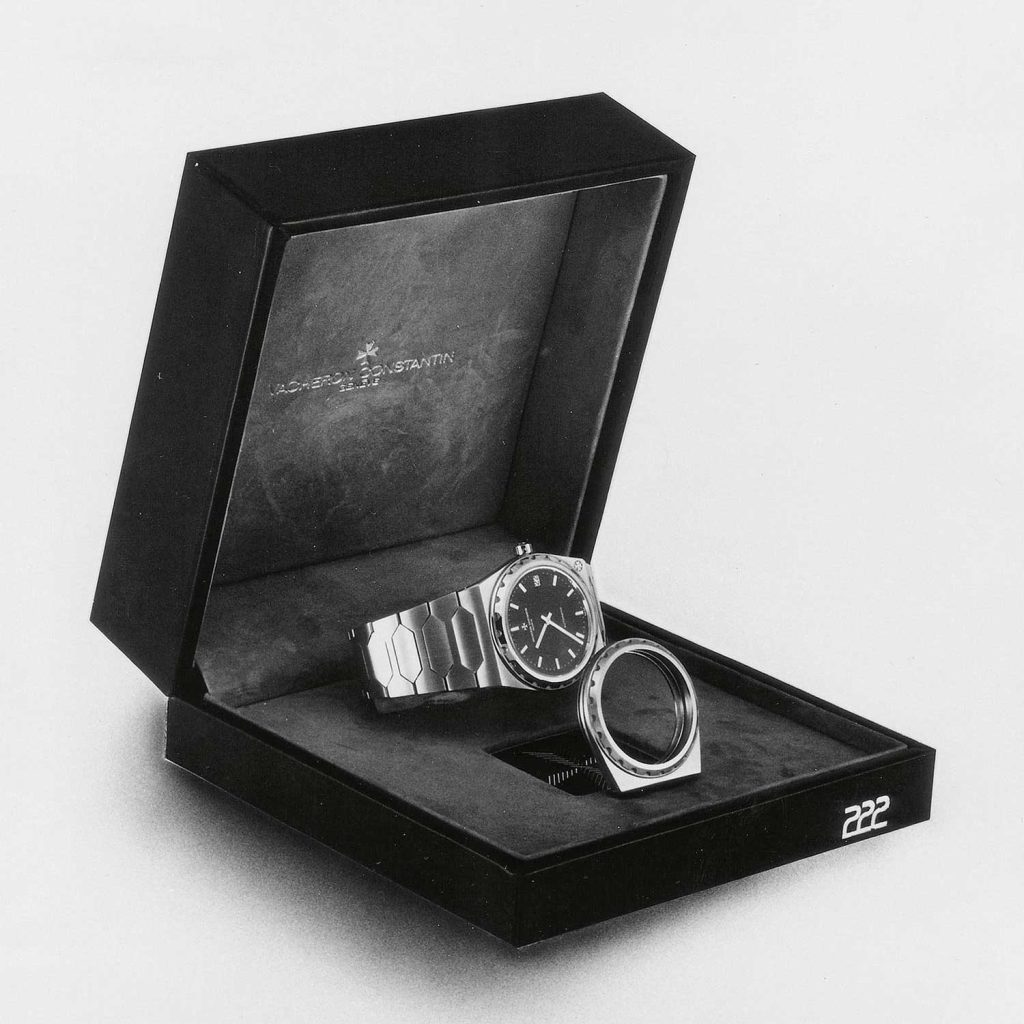
Vacheron Constantin ref. 222, designed by Jörg Hysek

Piaget Polo from 1979 (Image: FHH)
Integration and Differentiation
So, where does the integrated bracelet watch sit now? Has the style become just another design trope, or does it have a special place in the market? I would suggest that at the lower end of the market, the integrated bracelet has little relevance. The restrictions imposed on the wearer by the lack of flexibility have little pay-off in either design or prestige, but if you want a different look, you can just buy a different watch. The fields of prestige or luxury watches are more interesting and nuanced. There may be references to vintage models reimagined with modern watchmaking technology, or the chance to offer something completely new.
The undeniable kings of the sport-luxe field are the pioneers Audemars Piguet and Patek Philippe, whose original creations have never really gone away. The allure of the brand names and historical importance of the Royal Oak and Nautilus have, if anything, increased their demand over time to the point where they are hard to find at retail, and resell for a healthy profit in the pre-owned market. No longer limited to steel, precious-metal and high-tech-ceramic versions abound, but the originals remain the most sought after. Vacheron Constantin, as in the 1970s has had to play catch-up. The original reference 222 was replaced by the Overseas in 1996, and so, it lacks something of the retro cachet of the other two. It is a worthy alternative for those who want a sports watch from the ‘Big Three’ and has made great strides in overcoming the inflexibility imposed by an integrated bracelet, developing a system that allows the interchange of straps without the need for tools.
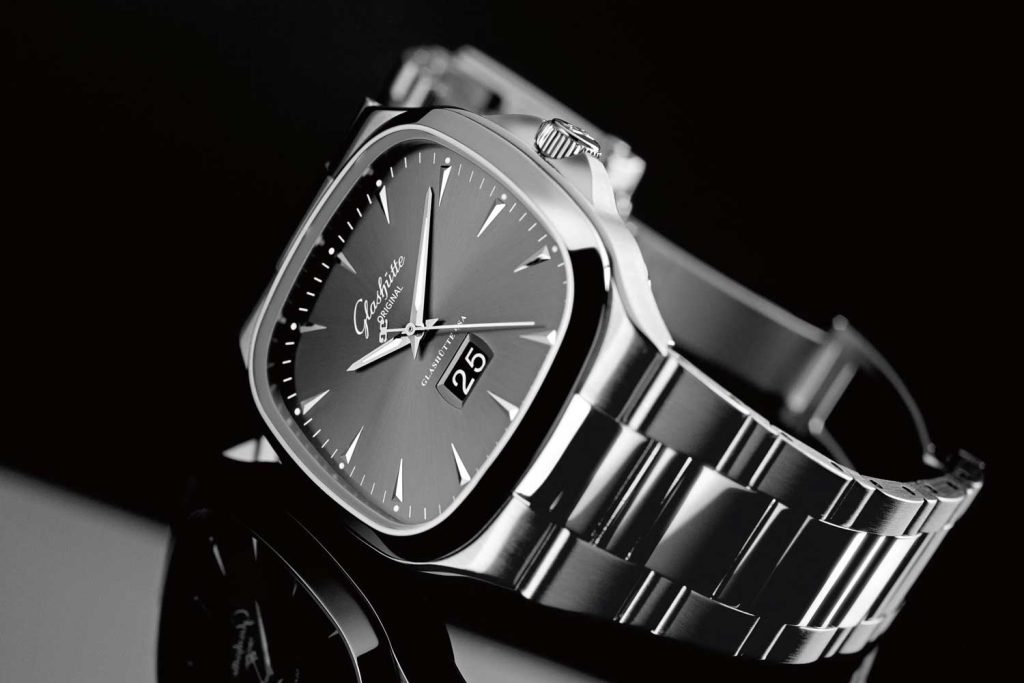
Glashütte Original Seventies with its integrated lugs recalls the impressive style of the Da Vinci designed by Genta
With watch brands seeking any opportunity to push up into the sports-luxe integrated-bracelet sector, you would be forgiven for thinking that the external design is all that matters. Is it all about claiming a slice of 1970s cool — and, hopefully, AP’s and PP’s success — regardless of the watchmaking on offer? Thankfully, we have examples of quite the opposite.
In 2011, François-Paul Journe launched his Linesport collection, a sporty alternative to his usual classicism. While the case and bracelet may be playful, the inner workings are deadly serious, offering chronographs either with split timing functions or precision to 1/100th of a second. Over at Laurent Ferrier, his entry into the world of luxury sports watches offers the same chronometer-grade tourbillon as the more sober examples of his art. The 44mm steel case is both bold and curvaceous, and although it integrates with a rubber strap rather than a steel bracelet, the cost of machining a dedicated bracelet for such a low-output manufacturer makes this forgivable.
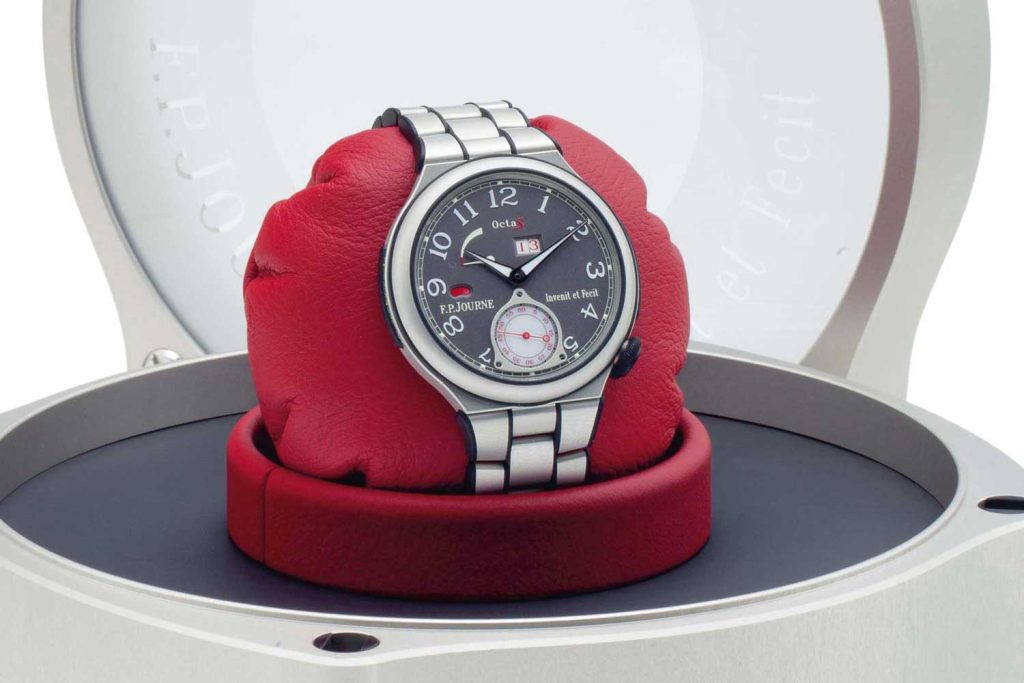
François-Paul Journe’s Linesport, first introduced in 2011

The Bvlgari Octo Finissimo is a wonderful example of case and bracelet design as a seemingly integrated whole, and fitted with impressive horological internals




